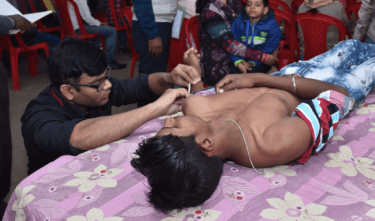Thalassemia is an inherited blood disorder which manifests when the child inherits defective gene from both the parents ( who are the carriers i.e. carry single defective gene along with a normal gene but they lack the features of disease). The affected person or child is not able to produce adequate hemoglobin or may form abnormal hemoglobin. Either of the situation leads to anemia. They depend on regular blood transfusions every fortnight for their survival. The patient need to undergo blood transfusion.
Joints are commonly affected. Repeated joint bleed events may lead to chronic degenerative changes. Therefore, gradual functional impairment progresses to disability and established deformity.
All bleeds are not due to hemophilia. There can be deficiency of fibrinogen, factor XIII, Von Willebrand activity or reduced platelet count or platelet function defect which needs a proper investigation.
It is divided in three main categories :
Lack of awareness about the disease
Beneficiaries ( number of patients) out number the resource (blood )
Huge gap in the implementation of prevention programme
High financial burden of treatment ( if not supported by Govt.)
Poor economic status of patients.
Weak diagnostic support for diagnosis and Genetic lab at Govt. level.
Why prevention is required?
The increasing incidence and prevalence of thalassemia patients will result in Shortage of blood resources due to life long blood dependancy
Complications related to Iron overload and with increasing age
Financial burden for the family
Genetic awareness
Pre-marital screening ( best option )
Pre-natal diagnosis
Mass screening ( on community basis)



